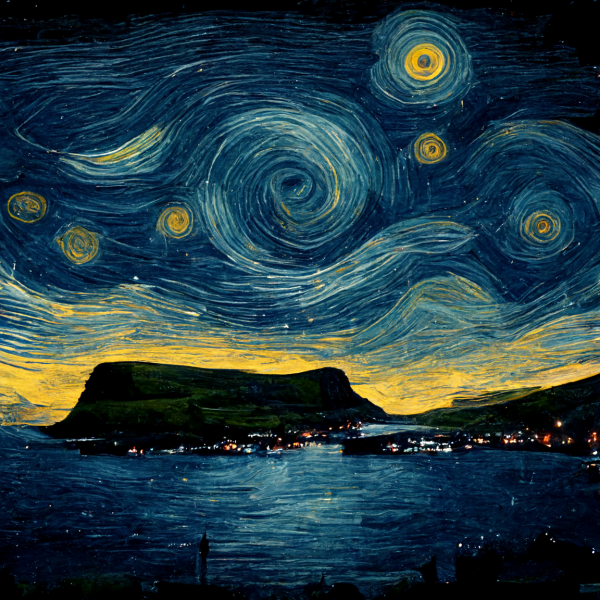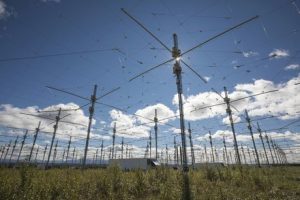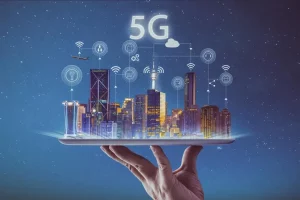Art has always been a reflection of the human experience, a way to capture emotions, thoughts, and ideas in a visual medium. Throughout history, artists have used different techniques, styles, and tools to create their masterpieces, but with the rise of artificial intelligence (AI), a new era of creativity has emerged. Midjourney AI is one of the companies at the forefront of this movement, using machine learning algorithms to generate unique and beautiful works of art.
What is Midjourney AI?
Midjourney AI is a technology company that specializes in using AI to create art. They use a variety of machine learning techniques, including generative adversarial networks (GANs), to generate images, videos, and even 3D models. Their AI models are trained on massive datasets of images, allowing them to learn how to create art in a particular style, such as impressionism, cubism, or abstract expressionism.
One of the most impressive things about Midjourney AI’s technology is its ability to generate completely original art. The AI is not simply replicating existing works, but is instead creating something entirely new. The company’s founders believe that their technology has the potential to revolutionize the art world, offering a new way for artists to create and for people to appreciate art.
How Does Midjourney AI Create Art?
Midjourney AI’s technology uses a combination of deep learning algorithms and neural networks to create art. The AI is fed a large dataset of images, and it learns how to generate new images based on patterns it sees in the data. The AI can then create new art in a specific style or based on a particular theme.
For example, if the AI is trained on a dataset of landscape images, it can learn to generate new landscapes that look similar to the images in the dataset. The AI can also be trained on specific artists’ styles, such as the brushwork of Van Gogh or the color palette of Monet. This allows the AI to generate art that looks like it was created by a specific artist, even though it is entirely new.
The Potential of Midjourney AI’s Technology
The potential of Midjourney AI’s technology is enormous. Not only can it be used to create beautiful works of art, but it can also be used for a variety of other applications. For example, the technology could be used to create realistic 3D models for video games or virtual reality environments. It could also be used to generate realistic images for advertising or product design.
In the art world, Midjourney AI’s technology could offer a new way for artists to create. They could use the AI as a tool to generate new ideas or to explore different styles. The technology could also be used to create collaborative pieces, where the AI generates a base image that the artist then works on to create a final piece.
The Future of Midjourney AI and AI in Art
Midjourney AI is just one of the companies at the forefront of the AI art movement. As the technology advances and becomes more accessible, we can expect to see more artists using AI to create new works. This could lead to a new era of creativity, where the line between human and machine-generated art becomes increasingly blurred.
At the same time, there are concerns that the use of AI in art could lead to a loss of human creativity and originality. Critics argue that the use of AI removes the element of human expression and emotion from art, and that AI-generated art will never be able to truly capture the human experience.
Despite these concerns, it is clear that AI is already changing the art world in profound ways. Midjourney AI’s technology is just one example of the potential of AI in art, and it will be
Advantages
There are several advantages of Midjourney AI’s technology for creating art:
- Speed and Efficiency: Creating a work of art can be a time-consuming process, requiring many hours or even days of work. With Midjourney AI’s technology, the process can be much faster and more efficient. The AI can generate new images and ideas in a matter of seconds, freeing up artists’ time to focus on other aspects of their work.
- Creativity and Inspiration: Midjourney AI’s technology can help artists generate new ideas and explore different styles. By using the AI as a tool, artists can break out of their creative ruts and explore new avenues of expression. The AI can provide a starting point for an artist to build on, leading to new and exciting works of art.
- Consistency and Reproducibility: Midjourney AI’s technology can produce images and other works of art that are consistent in style and quality. This can be especially useful for commercial applications, where a company needs a series of images or designs that all have a similar look and feel. The AI can also reproduce images and designs, making it easier to create variations or update existing works.
- Accessibility and Inclusivity: Creating art can be a difficult and expensive process, requiring access to materials, space, and specialized equipment. Midjourney AI’s technology can democratize the process, making it more accessible and inclusive. Anyone with a computer or smartphone can use the AI to create art, regardless of their background or resources.
- Innovation and Advancement: Midjourney AI’s technology represents a significant advancement in the field of art and technology. By using AI to create art, Midjourney AI is pushing the boundaries of what is possible and challenging traditional notions of creativity and originality. This can lead to new innovations and advancements in the field, benefiting artists, technologists, and society as a whole.
Disadvantages
While there are many advantages to using Midjourney AI’s technology for creating art, there are also some potential disadvantages to consider:
- Lack of Human Emotion: One of the criticisms of using AI to create art is that it may lack the emotional depth and expression that comes from human creativity. Some argue that AI-generated art is inherently sterile and lacking in the emotional resonance that comes from a human connection to the work.
- Ethical Concerns: As with any technology, there are ethical concerns surrounding the use of AI to create art. For example, who owns the copyright for an AI-generated work of art? Should artists be credited for works that are largely created by an AI? There are also concerns around the potential misuse of the technology, such as using it to create deepfakes or other forms of manipulated media.
- Technical Limitations: While Midjourney AI’s technology is impressive, it is still limited by the quality and quantity of the data it is trained on. The AI may struggle to create art in styles or genres that it has not been trained on, or may produce works that are repetitive or derivative if it lacks exposure to a diverse range of styles and techniques.
- Dependency on Technology: While using AI to create art can be liberating and innovative, there is a risk that artists may become overly dependent on the technology. This could lead to a loss of traditional artistic skills or an overreliance on the AI to generate new ideas and inspiration.
- Cultural Homogenization: Another concern is that the use of AI to create art could lead to a homogenization of artistic styles and ideas. If the same AI models are widely used, it could result in a proliferation of similar-looking works that lack the diversity and individuality of human-created art. This could stifle creativity and originality in the long term.




